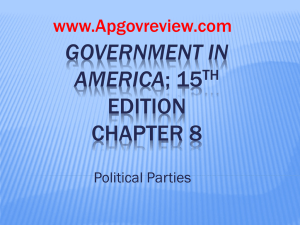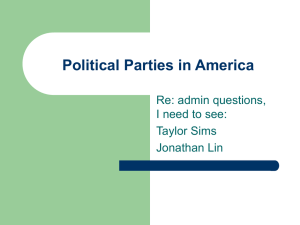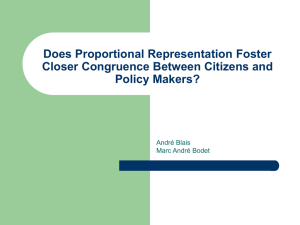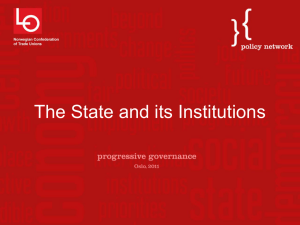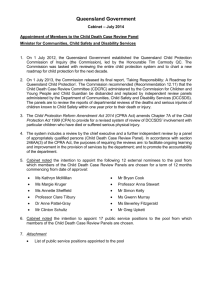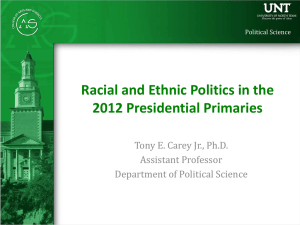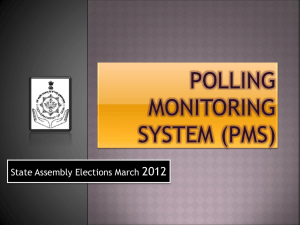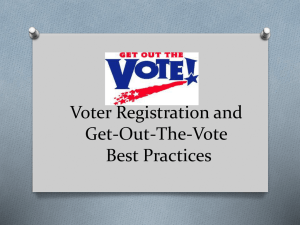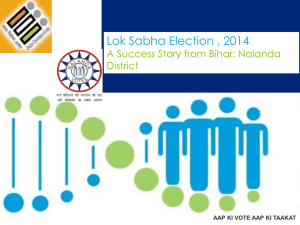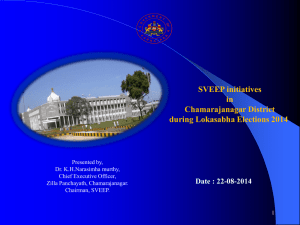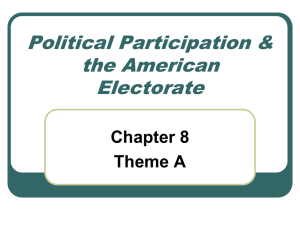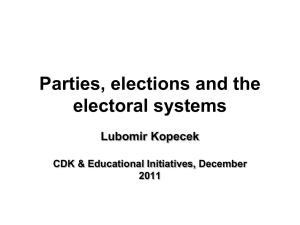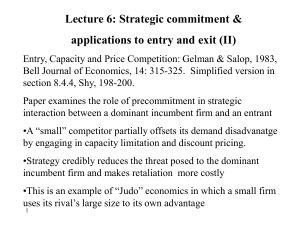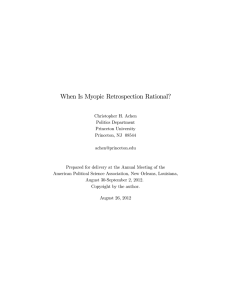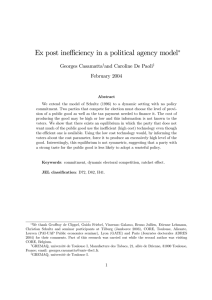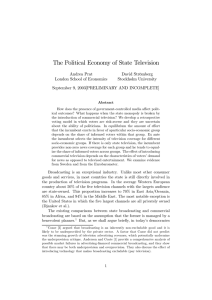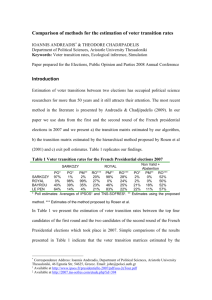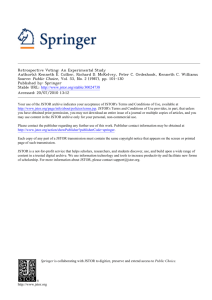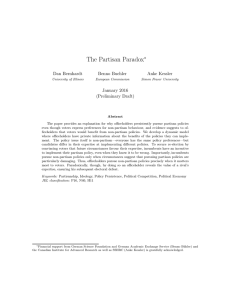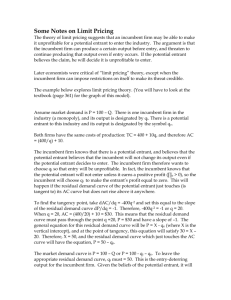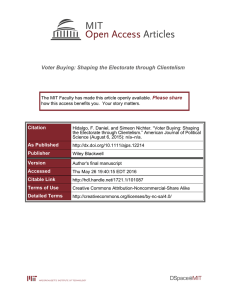Incumbent performance and electoral control
advertisement
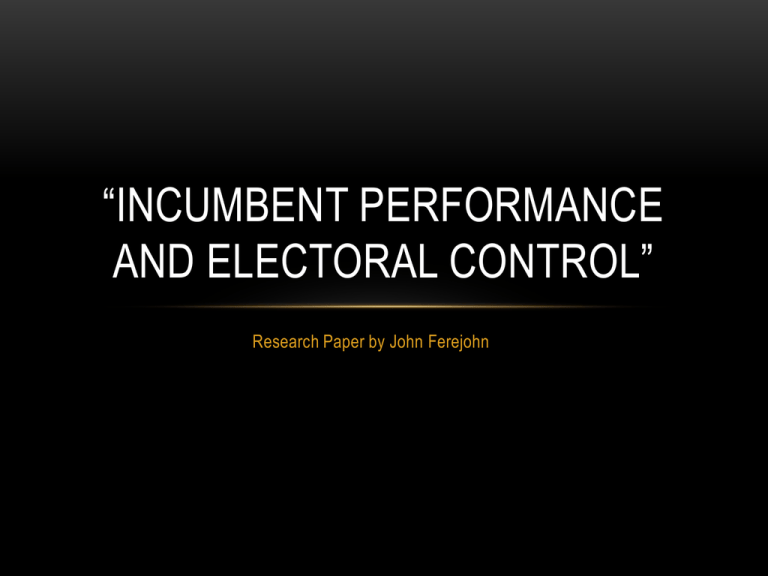
“INCUMBENT PERFORMANCE AND ELECTORAL CONTROL” Research Paper by John Ferejohn BACKGROUND TO PAPER • Pure theory of electoral competition based on idea that citizens compare the platforms of two candidates and vote for the preferred • Strategies of the candidates are represented by promises of future performance in office • Models have been created based on these assumptions, in both static and dynamic settings • Models of these sort possess the property that if the set of alternatives is “large enough” equilibrium platforms rarely exist STATIC MODELS [MCKELVEY (1975)] • Does not consider differing preferences between the politician and his constituents • It is assumed that promises will be kept by the officeholder • A discipline mechanism may be set in place to make sure promises are kept DYNAMIC MODELS [KRAMER (1977)] • Assumes that any challenger will propose a platform that will defeat the incumbent • Incumbent assumes he will lose the next election • Voters recognize that any rational challenger’s platform would ignore their preferences while in office PURPOSE OF PAPER Previous models show that there is no predictable connection between voter preferences and public policy • Author constructs a dynamic model where: 1. Electorate bases their vote on officeholder’s performance 2. Officeholder anticipates this behavior and chooses their policies PURPOSE OF PAPER (CONT.) • Empirical evidence shows that the pure theory of elections only partially describes electoral behavior • Recent data shows: • Voters respond to the performance of incumbents and to promises of competing candidates • Economic performance is relevant to the reelection of the incumbent ASSUMPTIONS OF THE MODEL • Voters assume officeholder will act in their own interests while in office • Voters will maximize their own welfare subject to the constraint that officeholders will pursue their own selfinterest • Voter behavior is constrained by the fact that it must be in the best interest of the voters at that time MODELS DEVELOPED IN THE PAPER • Simple dynamic model only contains one voter (homogeneous electorate) and two or more candidates • Analyzes the variation in electoral behavior • Nonhomogeneous model contains several voters and changes the situation significantly • Vote based on an aggregate criterion rather than individualistic MODEL WITH HOMOGENEOUS ELECTORATE • Voters have more control over officeholders if the value of office is high • Officeholder is imperfectly monitored by members of the electorate • Conclusion will hold up in more sophisticated models assuming disinterest in party reputations In a two party system: • Losing office is not as significant as it would be in a multiparty system so officeholders place less value in interests of electors • Voter control is decreased if parties cannot distinguish themselves MODEL WITH NONHOMOGENEOUS ELECTORATE • Because of differing voter preferences the incumbent is uncontrollable by the electorate • Rational individual behavior will lead to an undesirable outcome which will arise in any model in which voter preferences are sufficiently diverse • Potential exploitation by the incumbent leads voters to adopt “sociotropic” rules • Voting based on aggregate performance • Thus, induce the incumbent to provide the same level of service as in the homogenous model CONCLUSION • Simple model allows retrospective voting based on incumbent’s performance • Complex model requires electorate refusal to vote selfishly • Further ideas to explore: • Development of “sociotropic” rules • Collusion between incumbent and challengers
